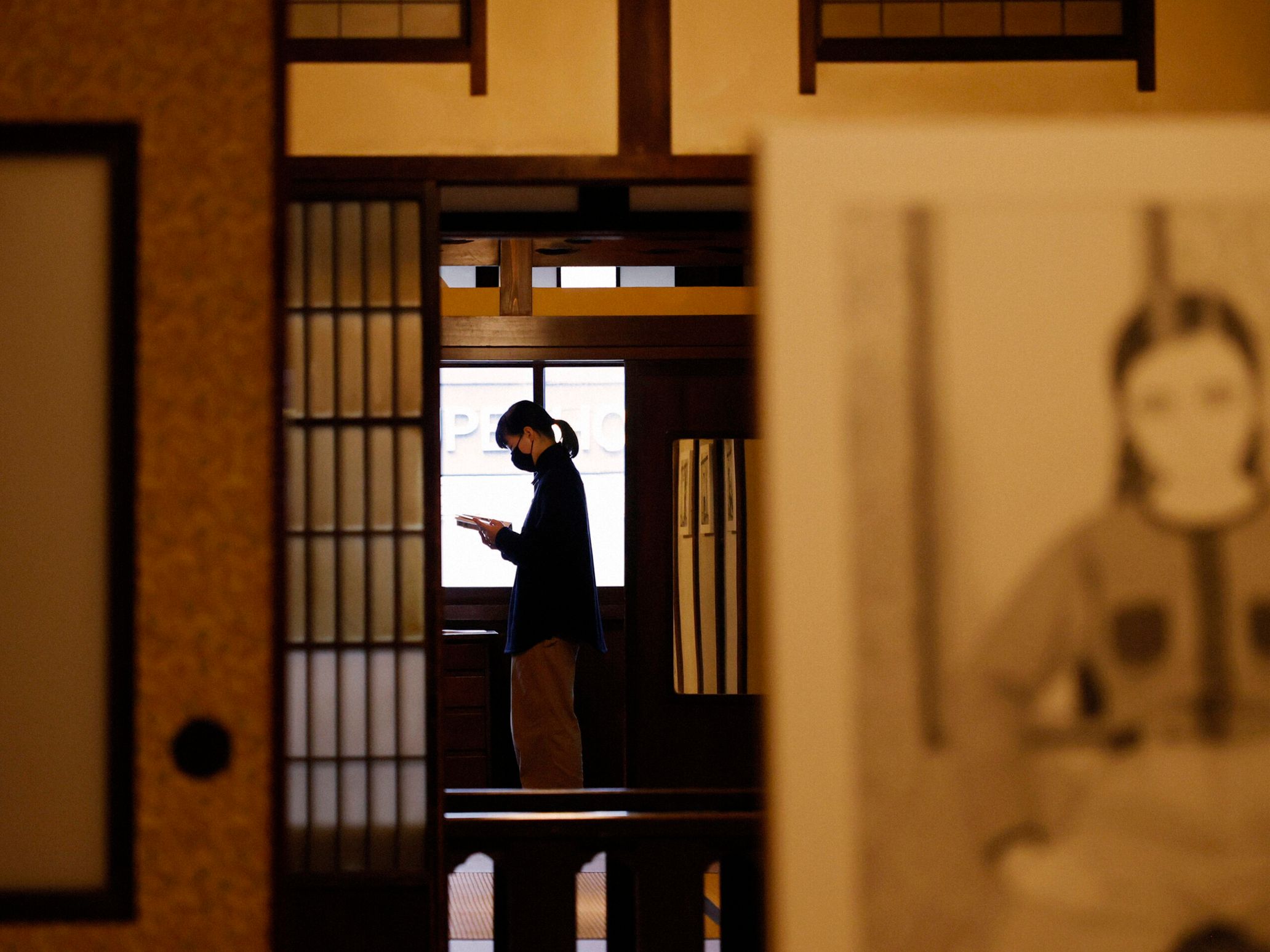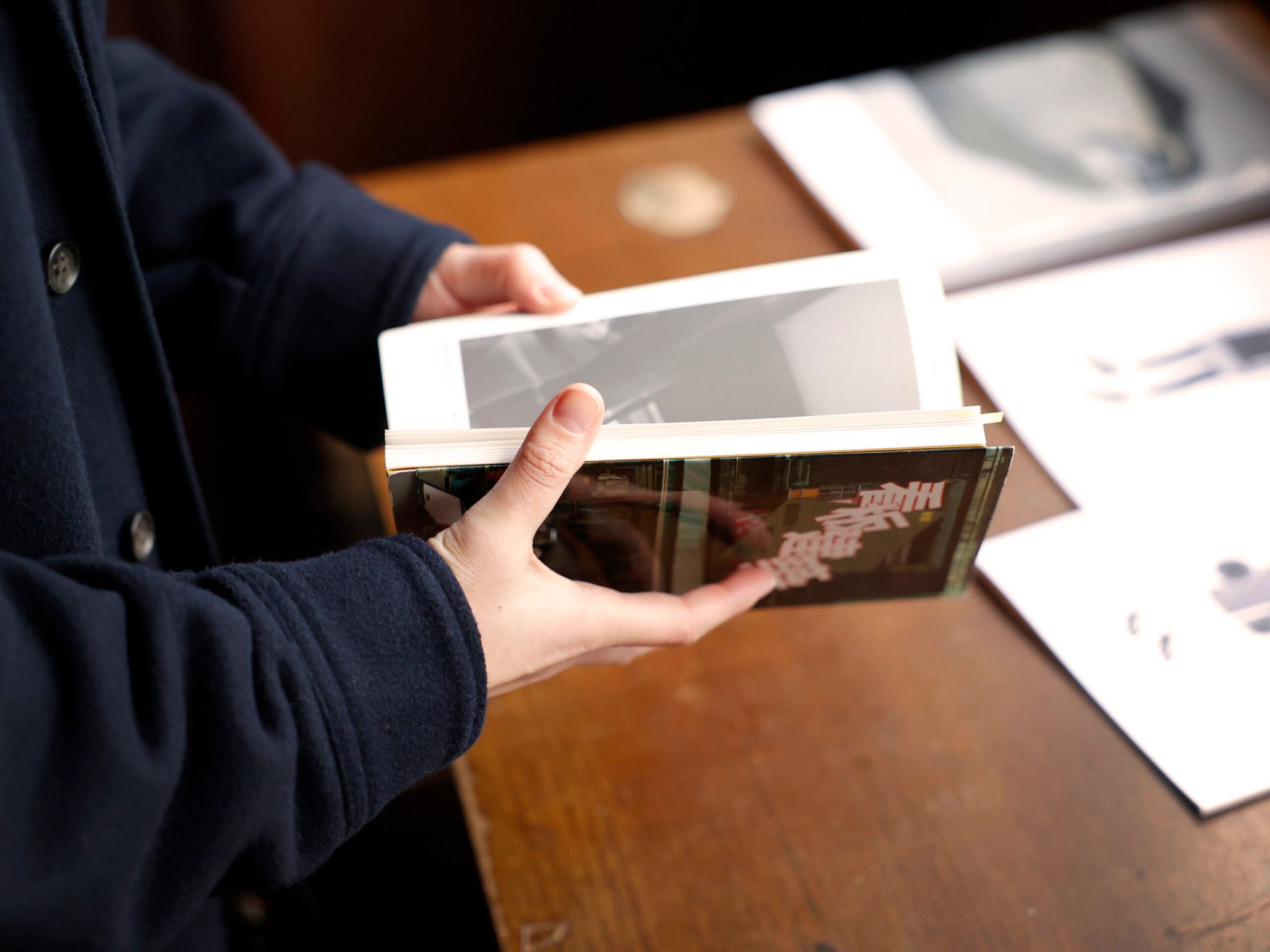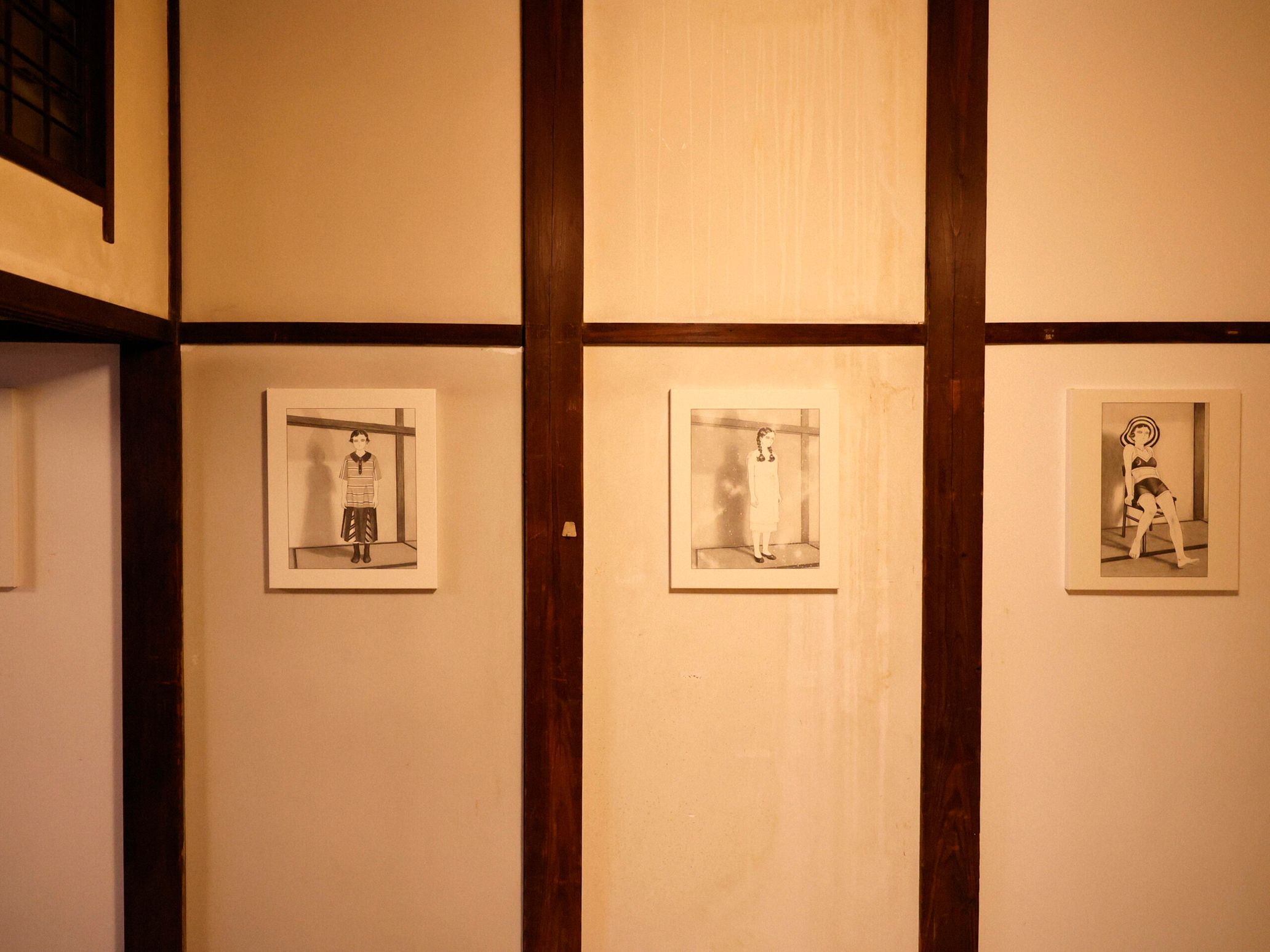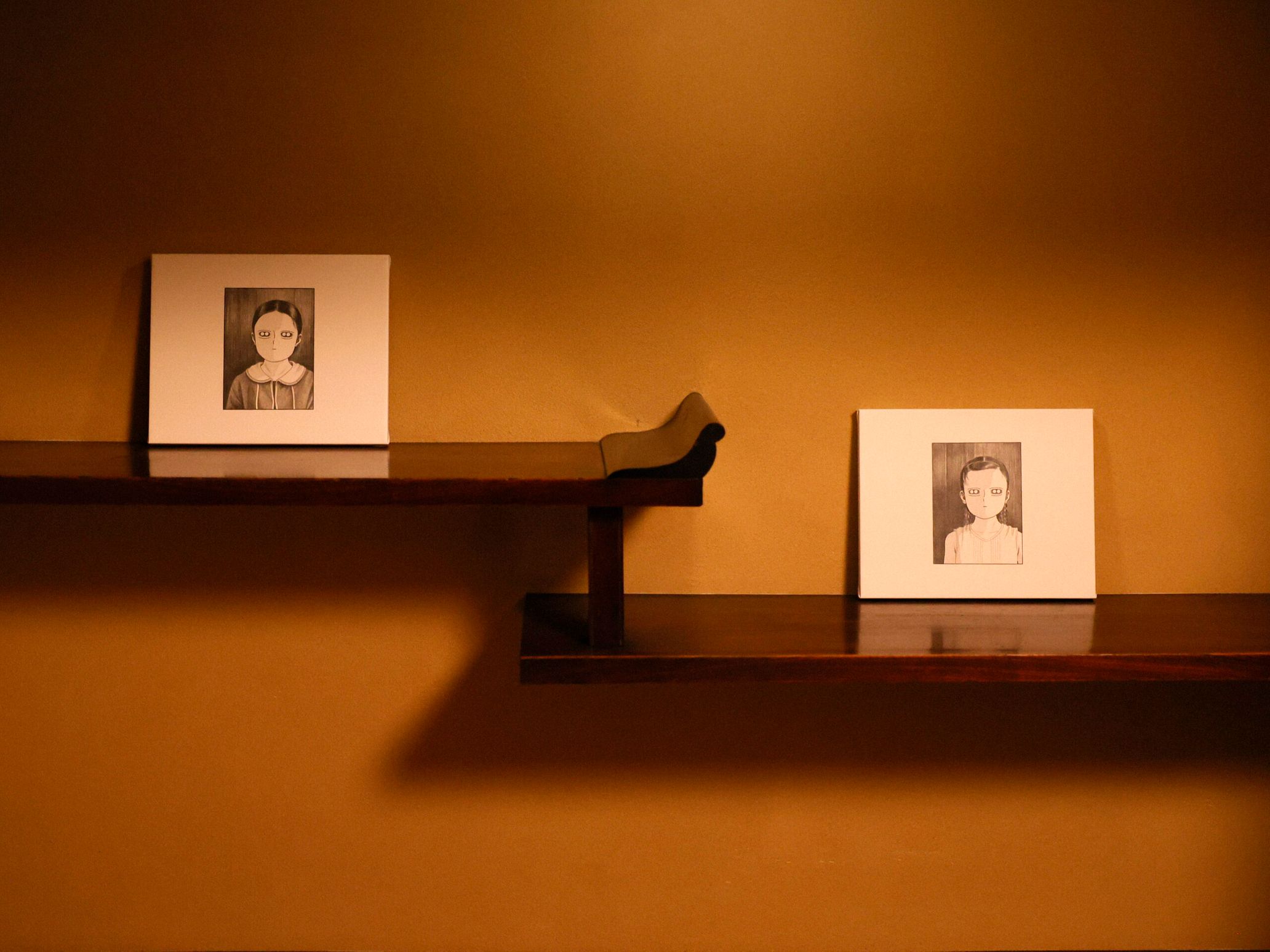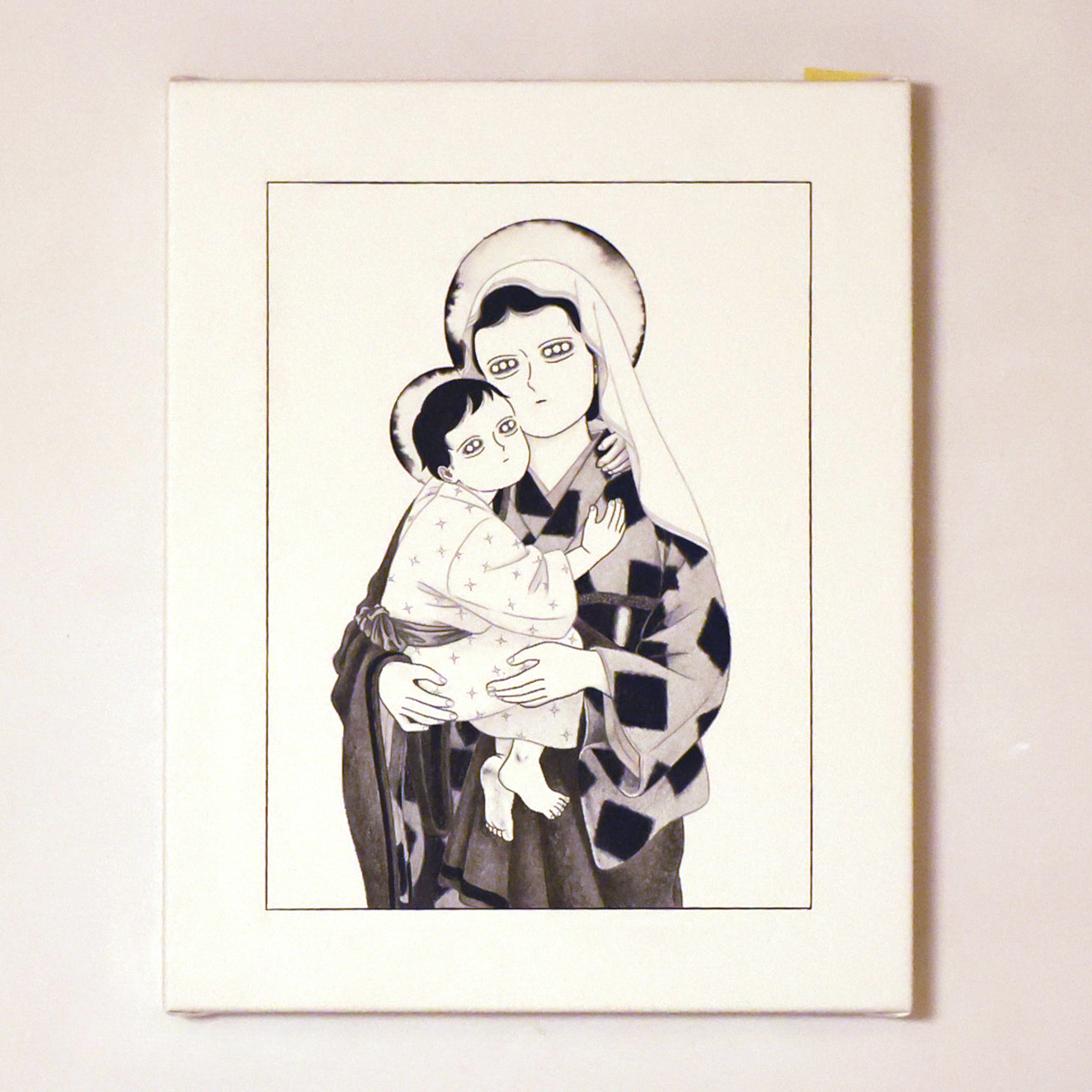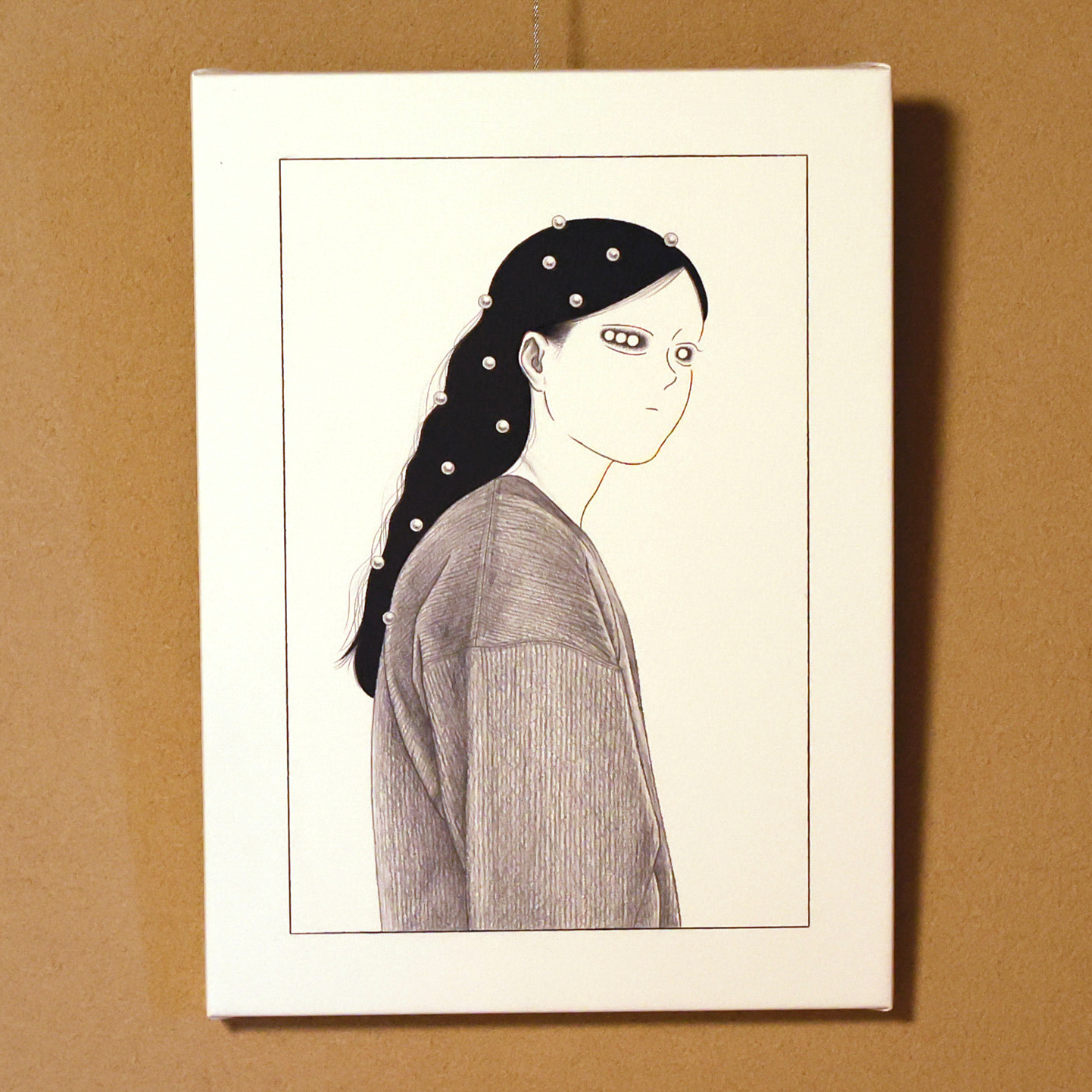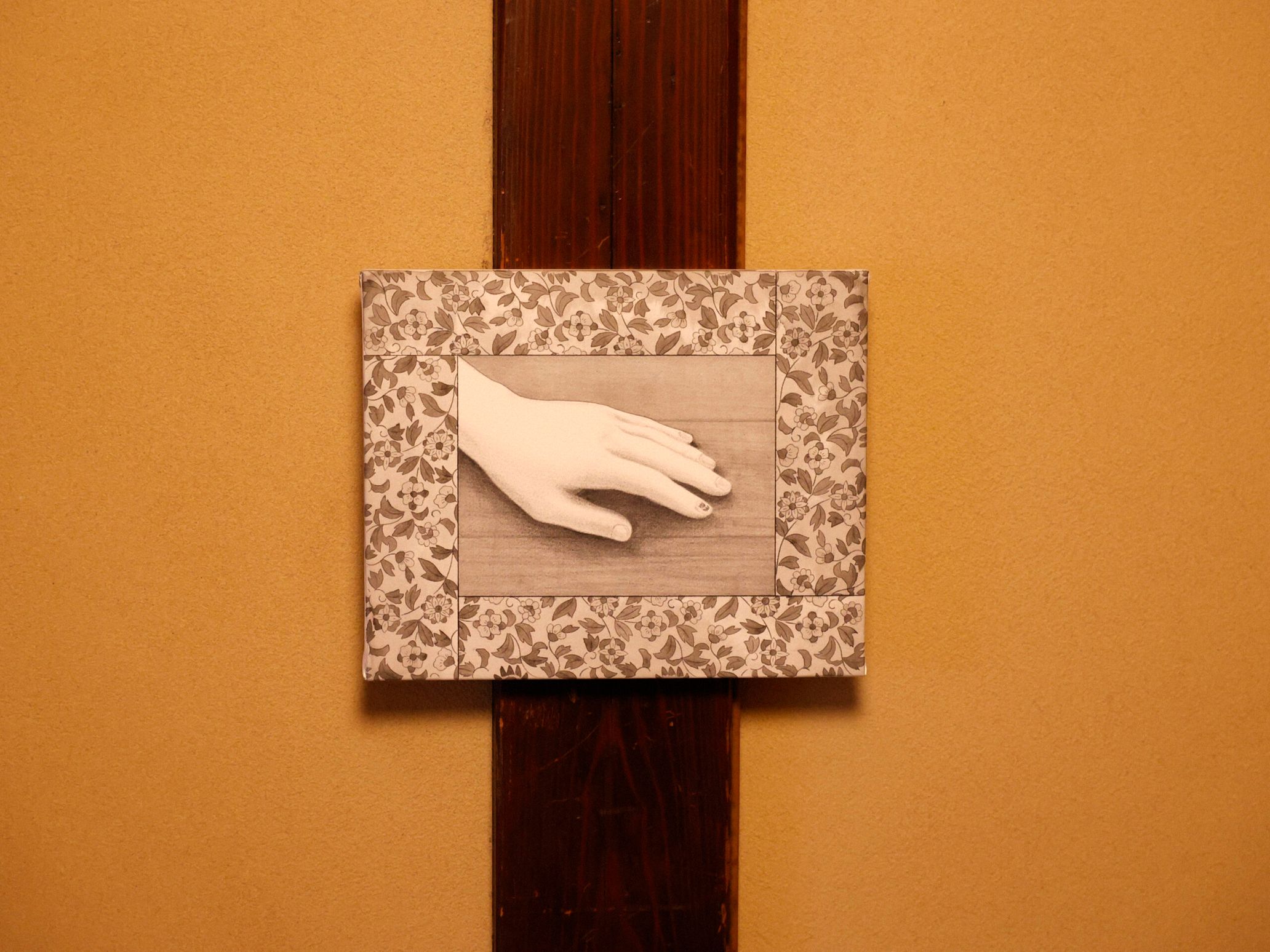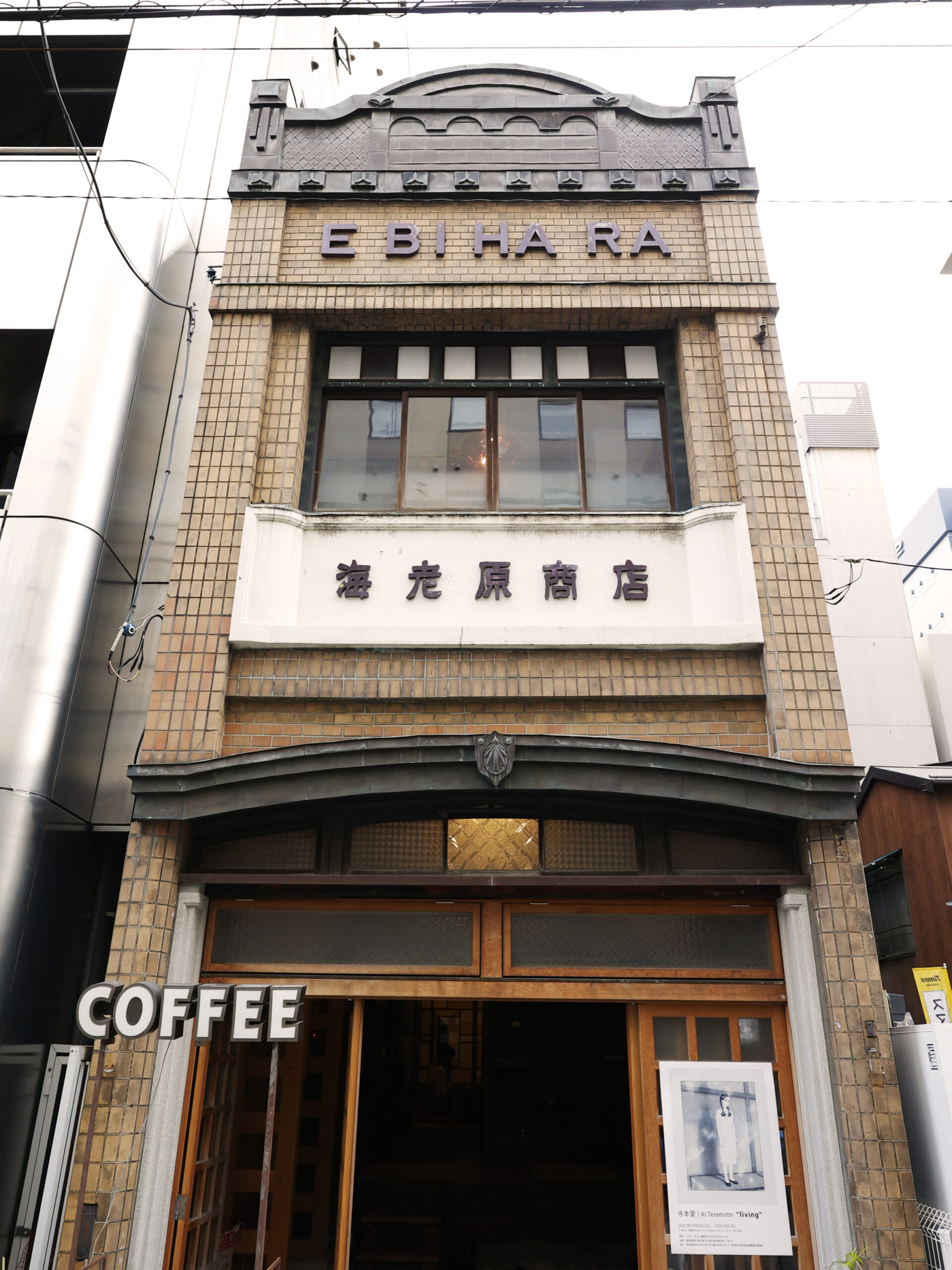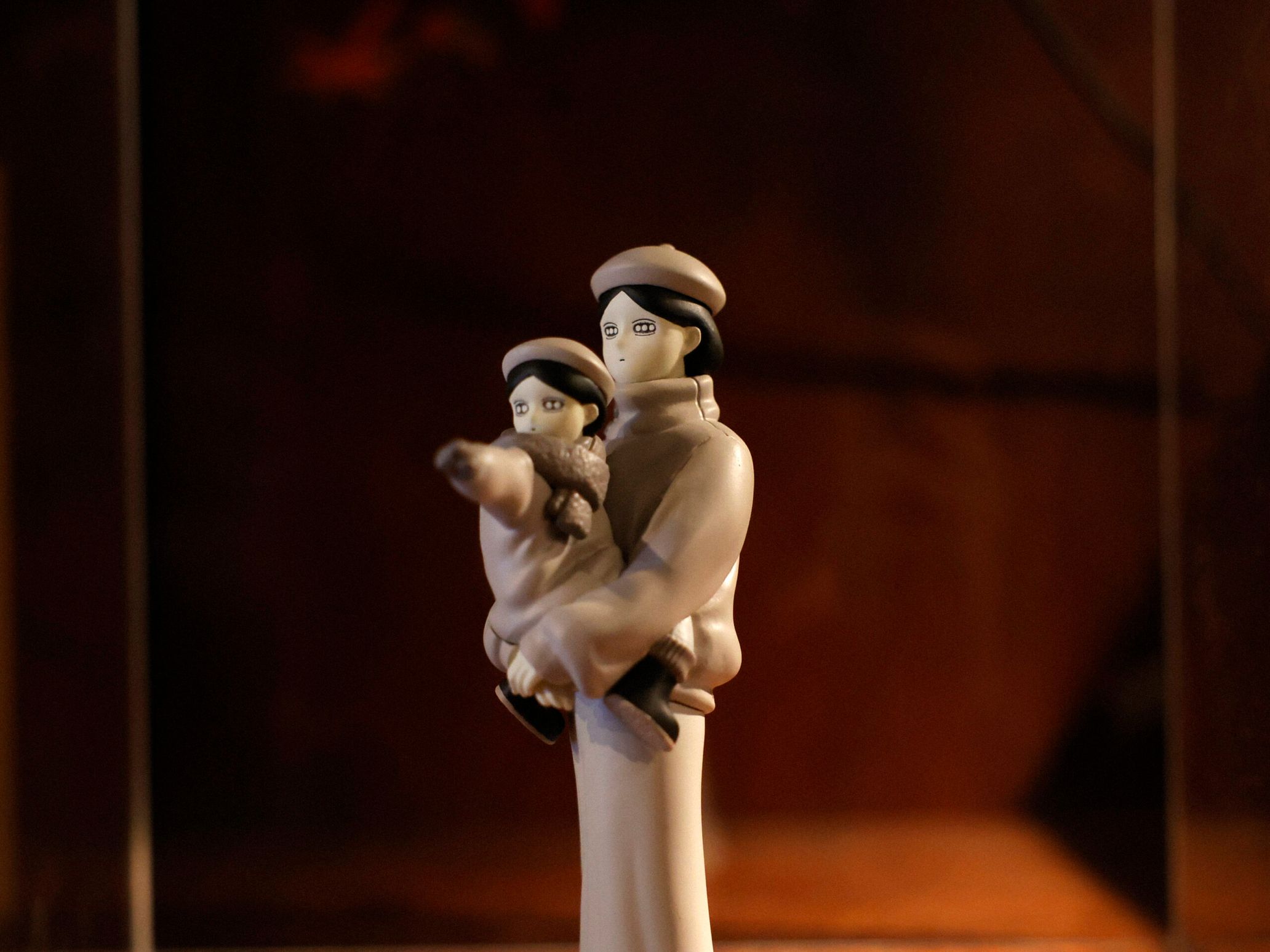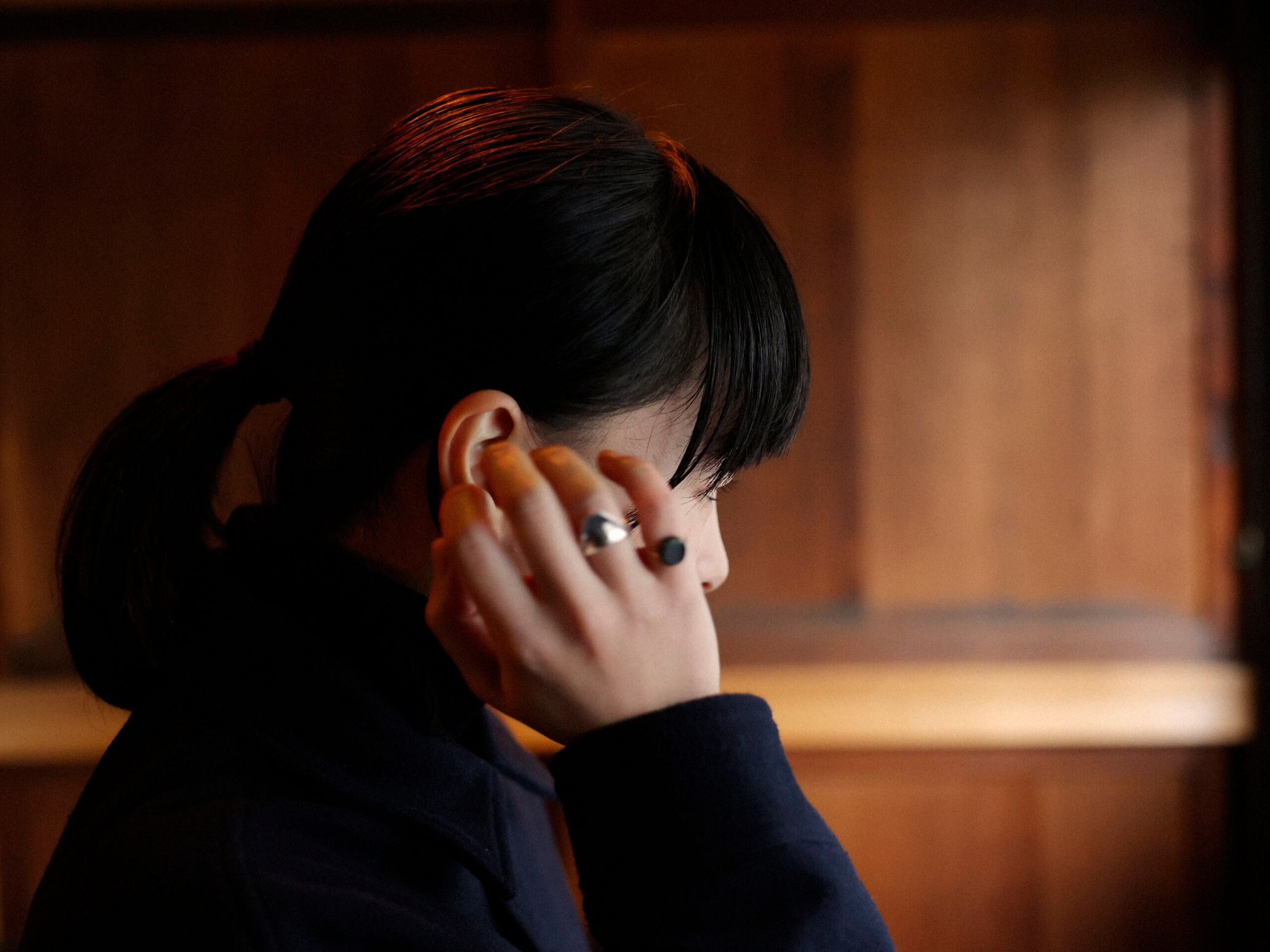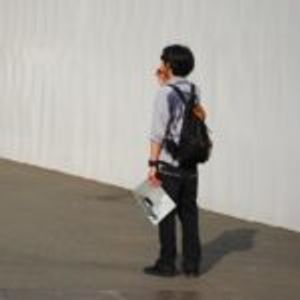Ai Teramoto’s an artist who has been garnering attention for her characters with distinctive eyes and nostalgic outfits. She studied fine arts and fashion at Musashino Art University, and since then has been collaborating with fashion and fabric brands while working on her artwork. There’s an appeal to her unique artwork. The characters’ distinct eyes and poses in Teramoto’s works are striking.
What does she want to portray? Teramoto tells us about her career to date, starting with her solo exhibition titled “living” held in December 2021 at Ebihara Shoten, a Japanese billboard architecture building in Kanda, Tokyo.
Discovering fashion and drawing in childhood
――I’d like to ask you about your latest work while looking back on your career. Firstly, could you talk about how you began drawing?
Ai Teramoto (Hereinafter Teramoto): I’ve loved drawing since I was a child. I would draw characters on the back of flyers with pencils and pens. I started using drawing software and posting my drawings on forums as an elementary school student on the family computer.
Back then, there was a serialized manga called GALS! (by Mihona Fujii) in a manga magazine for girls called Ribon. The story’s about gyarus in Shibuya, so the clothes were very detailed. The clothes they wore had a proper, realistic backstory, like “I bought it at this store for this much.” I enjoyed the fashion more than the story itself. I remember drawing original gyarus by putting together outfits and referencing the characters in the manga. Some of this still lives on in my current style of drawing.
――So, you’ve loved drawing people since you were small.
Teramoto: Yes. It was fun to draw manga-esque characters.
――I heard you studied fashion at an art university.
Teramoto: I liked drawing and was more familiar with manga and illustration. I wasn’t familiar with oil painting or Japanese painting. But it wasn’t like I was interested in graphic design, so I enrolled in the Department of Scenography, Display, and Fashion Design at Musashino Art University, where I could study an extensive scope of subjects such as stage design, interior design, fashion, and lighting.
I continued to draw in school and was so passionate about it that I took an exam to transfer to the Department of Painting. However, I became interested in fashion when I joined a seminar by Patrick Ryan, who runs the brand YAB-YUM. It was a seminar that had a broad view of fashion, and it meant a lot for me that he accepted the fact that I draw.
――What kind of drawings did you draw in school?
Teramoto: I discovered oil paints for the first time when I started school, and at first, I painted faceless geometrical alien-like portraits. After that, there was a period when I used acrylic paints, but painting with a brush on canvas wasn’t for me in any case. So, I started using pencils and pens little by little, as I was familiar with them.
I used to go on Tumblr a lot, and I would look at many simple illustrations of girls with a bit of a young, fragile vibe. Since I always enjoyed drawing manga-like characters, I started drawing such girls. Then, I started drawing what became the prototype for the eyes I draw today, but it didn’t have the fashion element yet.
When I showed those drawings to Patrick, he didn’t invalidate them, but he advised me to learn painting from zero instead of only drawing what I knew. For my graduation project, I drew something based on Buddhist Tibetan paintings and shunga, which were completely different from what I drew until that point.
――Does that experience still inform you today?
Teramoto: Yes. After graduating, I started drawing characters based on what I drew when I started out while considering what I’d learned under Patrick.
Enigmatic yet familiar figures
――Could you tell us about your current style? The fashion of your characters isn’t unconventional or loud, but instead nostalgic, like Japan during the Showa era. Do you try to avoid depicting trends?
Teramoto: In recent years, old photos from the Showa era have become the foundation of my work. It’s my preference, so the clothes I draw still have a strong Showa taste. But I’ve always tried not to draw trends. I hope to portray clothes with no sense of time; clothes that always look fresh in any era. Lately, I’ve been leaning toward the Showa era.
At first, I incorporated a variety of clothes, from the latest collections to folk costumes across the world, into my work, but I gradually became drawn to clothes closely tied to everyday life in different Japanese regions. Then, I became interested in the background and culture behind the clothes. Some examples are the white clothes of Japanese pilgrims, the covert Christians of Nagasaki, and post-war Okinawa. It’s not about fashion, but about human life in and of itself.
――I see. I’m also curious about the facial expressions of your drawings. They’re expressionless; I don’t sense any joy, sorrow, or especially sadness in your artworks. Is there a reason behind this?
Teramoto: I try not to draw easy-to-understand expressions from the start. The faces I draw are in a manga style, so if I drew faces that were easy to understand, they would become too typical. I want to create a vast range of expressions.
――You mean you want to leave that to the viewer?
Teramoto: That’s right. I want to leave some room for the viewer’s imagination. If there’s a clear expression, the viewer will have a passive experience.
――I see. A key characteristic of your art is the eyes. What is it about them that attracts you?
Teramoto: I initially strived to become an illustrator, so I focused on the eyes because I thought I had to create memorable characters with signature features.
I was directly influenced by the manga Cyborg 009 (by Shotaro Ishinomori), which I read when I was in elementary. The characters had random white dots in their rich black eyes, and I liked how mysterious they were. The other is Yuichi Yokoyama-san’s manga, which I came across when I was in university. His characters had glittering eyes, even though he drew them with simple lines without screen tones like those in shojo mangas. The eyes were so sparkly, like over the top. I was surprised at how it was possible to draw eyes like that. These two artists have greatly influenced me in terms of the eyes.
In the early days of my career, I drew the eyes with a rough hand, but as I eventually changed my mindset from drawing characters to drawing people, my portrayal changed to what it is today.
――So, you revamped your style.
Teramoto: The way I draw the eyes hasn’t changed that much, but the faces and bodies have changed a lot over the past eight years. It’s more human-like. I assume that’s why the oddness of the eyes stands out.
It’s a little creepy that they have eyes that don’t look human, but they’re not so different that you could call them aliens. They still possess a human rawness. I’m always conscious of the elusiveness and tension they have.
A beam of color lurking in a black and white world
――I’d like to ask you about your solo exhibition “living.” You held it at Ebihara Shoten, a billboard architecture building built in 1923 in Kanda, Tokyo, instead of a gallery. Why Ebihara Shoten?
Teramoto: Most of my exhibitions had been in galleries until then, but after I used a classroom in an elementary school for an art festival in 2019, I became interested in showing in places outside a white cube. A connection of mine introduced me to Ebihara Shoten.
――It was great to see the Showa-esque building and your art merging naturally. What was the concept behind the art you exhibited?
Teramoto: For the past few years, I’ve been drawing based on old documents and photos. I weave it with fiction and personal experiences. Before I started drawing for the exhibition, I looked at family photos and documents passed down from generation to generation at Ebihara Shoten. Also, I heard anecdotes about the Ebihara family and the building from its current owner, Yoshiya Ebihara-san.
My parents renovated their house about a decade ago, but before that, it was old and, of course, had a Japanese-style room. Being in the Japanese-style room at Ebihara Shoten reminded me of the time I spent in the Japanese-style room at my parents’ house as a child, and since I have a Japanese-style room in my own house now, it was like the three Japanese-style rooms as well as time and space converged through my body.
――When you say mixed fiction and non-fiction, it’s not the same as looking at family photos while drawing, right?
Teramoto: I made some of my art like that, but recently I’ve been drawing based on photos I’ve taken of myself. I put a camera on a tripod in my room and take pictures of myself in different poses or the same poses as the people in the photos. I use the ones I think are good.
――Interestingly, the photos you took are selfies. What led you to do that?
Teramoto: I used to take photos as reference material when drawing technically challenging poses. As I became more intent on drawing people rather than characters, I gradually came to feel that I was using my body to become the person in the drawing, rather than using it as reference material.
――For your solo exhibition “living,” memorable photos and the anecdotes you heard became the motif of your works.
Teramoto: Yes. Since “living” was in a residential space, I became more aware of day-to-day life than before. For instance, it’s hard to recall what you were doing when you weren’t present in the moment. You’re aware that you’re looking at your reflection in the mirror while brushing your teeth, and you’re aware of what part of your mouth you’re brushing, but later, you can’t remember what you were doing after that and before you did the following task. I wanted to portray what it looks like when we’re not that mindful.
――Indeed, the poses look like you took them from someone’s daily life, and the size of your work fits people’s everyday life at home.
Teramoto: I wanted the viewer to be immersed in Ebihara Shoten, so rather than dominating the space with my work, I tried to find a balance like, “The building comes first, and the artwork comes second.”
――Some of the figures in your exhibition had pearls on their skin. Could you talk about these?
Teramoto: That motif is something I did for my previous series titled “Ceaseless.” I once struggled with skin issues, and I saw this foreign fashion collection where the models had pearls on their skin. I was inspired by that and started drawing those pictures. Pearls have a rawness and beauty that’s different from gemstones; they’re foreign objects and ornaments attached to the skin. Something about that felt right to me.
――I also remember how you used a minimum amount of colors in your art.
Teramoto: When I draw, I focus on how good the lines and shapes feel, so colors seem to get in the way of that. I wasn’t very interested in using color and felt like I wasn’t very good at it.
I don’t feel that way as much now, and I’ve begun using color little by little. I realized it’s possible to use color not as a color but as an effect. In some of the works in this exhibition, I used colored pencils to outline the body lightly.
――Right! I didn’t notice. I think it’s great that the colors emphasize your intricate work even more. What kind of materials do you use?
Teramoto: I use pencils, mechanical pencils, and ink. I used to use pens, but I don’t use them anymore.
――Lastly, what’s next in store for you?
Teramoto: At the “living” exhibition venue, I displayed a figurine, which I made after being approached by a figurine company. It was so much harder than I expected, and obviously, it wasn’t the same as drawing. It was difficult to switch from my drawing brain to a figurine-making one. I had to adjust small nuances many times, and it took a long time, but thankfully, I was able to create a lovely figurine.
I’m getting ready for my next artwork. I hope to update my art expression as I interact with things I’m interested in.
Ai Teramoto
Ai Teramoto is an artist born in 1990 in Tokyo. After studying art and fashion design at Musashino Art University, Teramoto began creating original artworks. While continuing to showcase her art at solo exhibitions and art festivals, she has also created artwork for different clients. She also draws illustrations and manga. Recent exhibitions include her solo show “coastline” at FARO Kagurazaka (2021) and an exhibit at Yanbaru Art Festival 2020-2021 (2021).
https://aiteramoto.com/
Instagram: @aiteramoto
Twitter: @ai_teramoto
Photography Shinpo Kimura
Translation Lena Grace Suda

